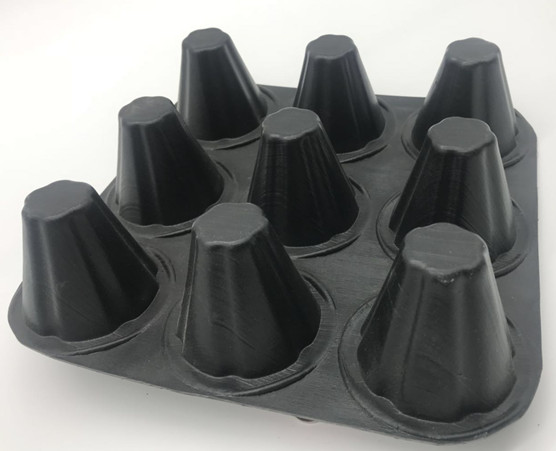The plastic drainage board is made of polystyrene (HIPS) or polyethylene (HDPE) as raw materials. The plastic bottom plate is punched into conical projections or stiffening ribs (or hollow cylindrical porous).
The top surface of the conical projection platform is glued with a layer of filter geotextile to prevent the passage of soil particles, thereby avoiding the blockage of the drainage channel and making the channel drainage smooth. The traditional drainage method uses masonry tiles as the filter layer and more pebbles.
Drain board
Or crushed stone is used as a filter layer to drain the water to a designated location. The use of drainage boards to replace the cobblestone filter layer to drain water saves time, effort and energy, saves investment, and can also reduce the load on the building.
A good drainage system plays an important role in the construction period of civil works and the normal use and life of structures. The drainage plate and the porous pipe form an effective drainage system, and the cylindrical hollow drainage plate and geotextile also form a drainage system, thus forming a system with water seepage, water storage and drainage functions.
Scope of application
Greening project: garage roof greening, roof garden, vertical greening, sloping roof greening, football field, golf course.
Municipal engineering: airports, roadbeds, subways, tunnels, landfills.
Construction engineering: the upper or lower layer of the building foundation, the interior and exterior walls and bottom of the basement, the roof, the impermeable and thermal insulation layer of the roof, etc.
Water conservancy projects: anti-seepage water in reservoirs, reservoirs, and artificial lakes.
Traffic engineering: highways, railway subgrades, dams and slope protection layers.
